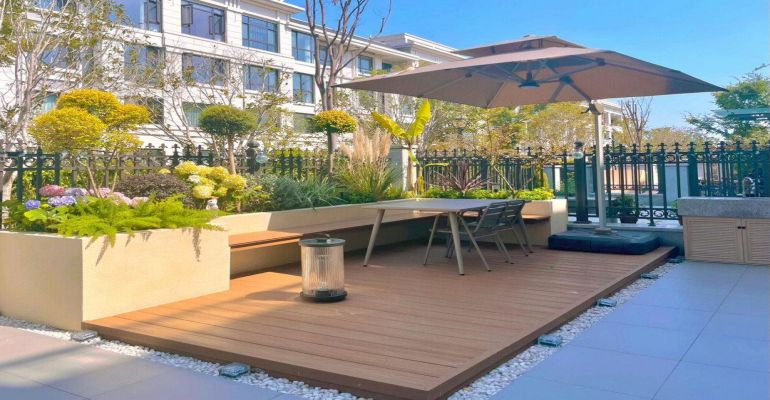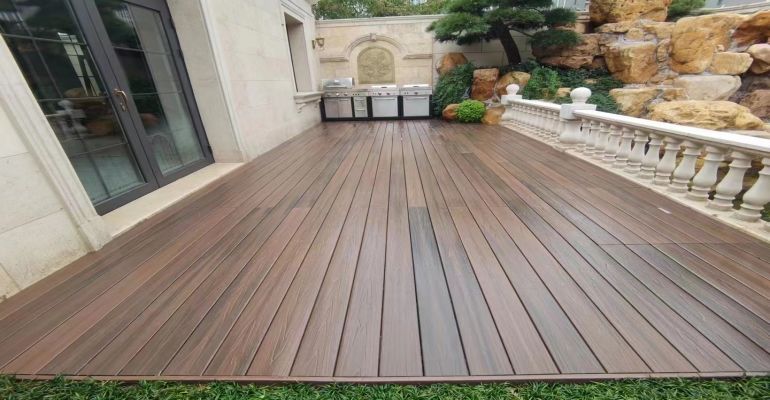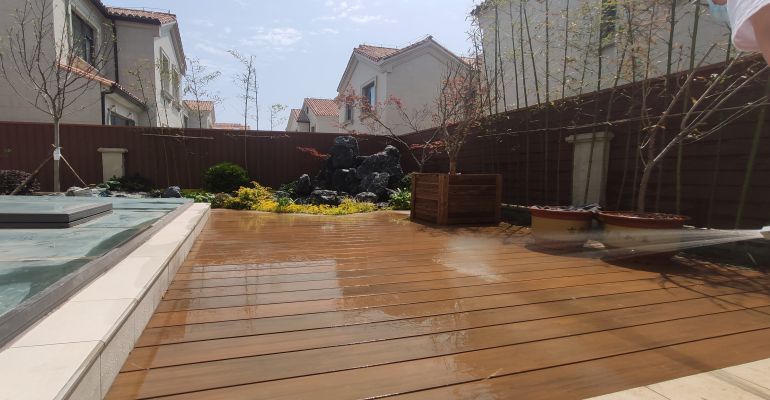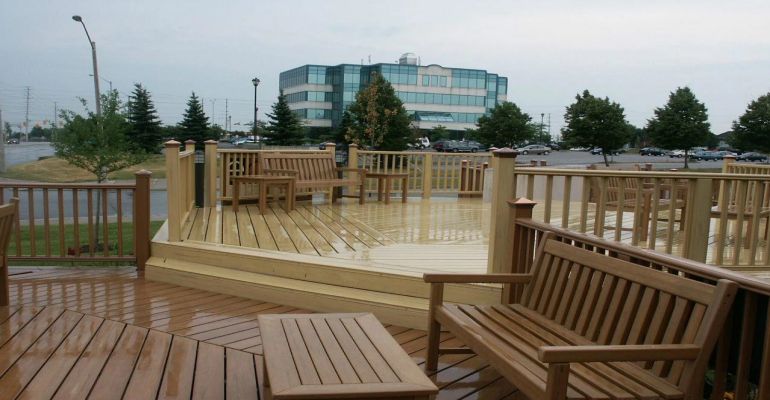Wood-plastic composites: an environmentally friendly material with a wide range of uses
Wednesday, August 16, 2023Wood-plastic composite materials are made of waste plastics and wood powder (such as sawdust, bamboo powder, rice husk, straw, etc.) as raw materials, mixed in a certain proportion, and special additives are added. A new type of composite material made by high temperature, extrusion, molding and other processes. It has excellent performance, wide range of uses, is beneficial to environmental protection, has broad development prospects, and is worthy of vigorous research and development and promotion.

Processing technology and performance characteristics of wood-plastic composite materials
The technical feature of wood-plastic materials is to mix two different materials with large differences. That is to say, wood and plastic are combined into one to make a composite material.
As an organic filler of plastics, wood flour (or fiber powder of crops) has many excellent properties that other inorganic fillers cannot match, such as wide source, low price, low density, good insulation, etc., but it is not obtained like inorganic fillers. widely used. The main reasons are: first, poor compatibility with matrix resin; second, poor dispersion effect in melted thermoplastics, resulting in poor fluidity and difficulty in extrusion molding. Since the main component of wood flour is cellulose. Containing a large number of hydroxyl groups, these hydroxyl groups form intermolecular hydrogen bonds or intramolecular hydrogen bonds to make wood flour water-absorbent. And the polarity is very strong. Most thermoplastics are non-polar and flowable, so the compatibility between the two is poor, and the bonding force at the interface is very small. It is necessary to modify the surface of plastic and wood powder through additives. Improve the affinity of the interface between them. The modified wood powder has reinforcing properties, which can well transmit the stress between the filler and the plastic, thereby achieving the effect of enhancing the strength of the composite material.

Extrusion molding, thermocompression molding, and injection molding are the main molding methods for processing wood-plastic composite materials. Due to the short extrusion processing cycle and high efficiency, the extrusion molding method is a more commonly used process route.
From the technical characteristics of wood-plastic composite materials, there are mainly the following categories: according to the raw materials, the plastic raw materials used in one category are pure plastics or commercial-grade plastics; the other category uses single-component waste plastics with certain characteristics. . According to the processing technology to points. One is the two-step molding method. That is, the plastic is mixed with wood powder and then directly molded.
From the perspective of forming mechanism, one type is physical forming. That is, the use of thermal insulation adhesive. In the molding process, the plastic and wood powder are bonded together; the other is physical and chemical molding. That is by adding additives. Under pressure and temperature control. The raw material mixture is transformed into a high-molecular network fiber material together with relatively low-molecular additives. Materials made by this process. The internal structure is completely regenerated network molecular structure after fusion, which is better in bending, compressive and impact strength than wood-plastic products produced by other processes.

At present, wood-plastic composite materials have the following advantages:
(1) Easy to process. Wood-plastic composites contain polyester and fibers. Therefore, it has similar processing properties to wood. It can be sawed, nailed and planed. This can be done with woodworking tools. And the nail holding power is obviously better than other synthetic materials;
(2) High strength and good durability. Wood-plastic composites have a good modulus of elasticity. also. Because it contains wood fiber and is cured by resin. Therefore, it has physical and mechanical properties equivalent to hardwood, such as compression resistance and impact resistance, and its durability is significantly better than ordinary wood materials;
(3) Water resistance and corrosion resistance. Wood-plastic materials and their products can resist strong acid and alkali. Water resistance, corrosion resistance. And do not breed bacteria. Not easy to be eaten by insects. no fungus
(4) Strong adjustability. By adding different additives, polyester can undergo changes such as polymerization, foaming, curing, and modification. Thereby changing the density, strength and other characteristics of wood-plastic materials. Meet special requirements such as anti-aging, anti-static, flame retardant;
(5) Wide range of sources of raw materials. In addition to using a certain amount of additives for wood-plastic materials. More than 95% of the raw materials are polyester and wood fiber. It has a wide range of sources and low prices.

Application fields of wood-plastic composite materials
Wood-plastic materials are mainly used in the packaging industry for pallets, packing boxes, and containers. Just take the pallet as an example, at present. The annual consumption of pallets in North America is as high as more than 200 million; the annual consumption of Japanese pallets is about 6 million. It is predicted that the average annual usage of wooden pallets in my country may exceed 20 million in the next few years, so there is a great market demand in China.
Wood-plastic materials have the characteristics of moisture resistance and insect resistance, and are suitable for shelf boards, sleepers, beams, floors, etc. used in the storage industry. Although the application of wood-plastic materials in my country’s storage industry has just begun. But demand is increasing rapidly.

Gazebos, seats, flower pots, trash cans, etc. made of wood-plastic materials are waterproof, moisture-proof, and anti-corrosion. Moreover, the lifespan is long and the price is low; products such as houses, outdoor floors, sun rooms, docks, and guardrails made of wood-plastic composite materials have begun to start abroad.
In addition, apply wood-plastic composite materials to develop automotive interiors, composite pipes, railway sleepers, cable protection pipes, manhole covers and other products. It is also entering the application testing stage from the demonstration stage. It is believed that in the near future, the application field of wood-plastic products will still be further expanded.